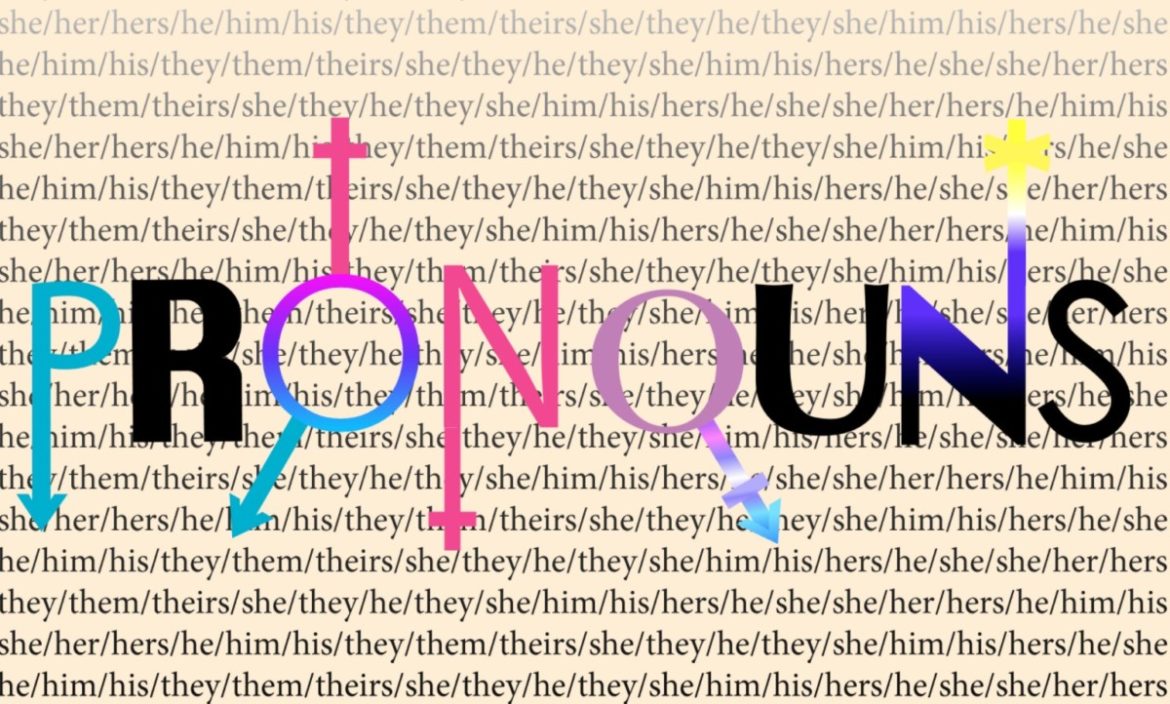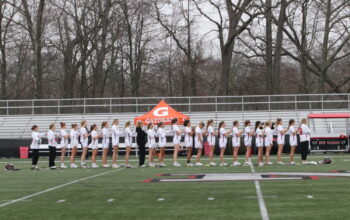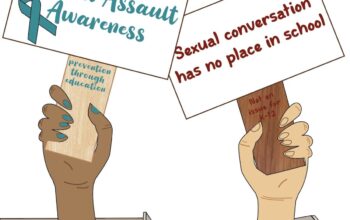Lauren Doherty, Editor-in-Chief
@ldohertycourant
Pronouns have been evolving for centuries. The old-english usage of “thou” has been replaced by “you”, while similarly “she” was formerly referred to as “heo.” Today, the once-rigid gender-assigned pronouns of she/her and he/him are beginning to fade as an identity standard. Increasingly, gender fluid pronouns, like they/them, are being adapted by English speakers.
The use of “they” as a singular third person pronoun is no new distinction in American English. In classic works such as The Canterbury Tales, Hamlet, and The Universal Declaration of Human Rights “they” is used as a singular pronoun at least once.
Junior Luka Pereira has been using they/them pronouns since their freshman year when first moving to New Canaan. For Luka, who was born in Brazil and speaks Portuguese as a first-language, learning about gender-neutral pronouns came at the same time as learning English. “It was new in the same way that the whole language was new to me,” Luka said. “It wasn’t something surprising to me.”
In Portuguese, objects are distinguished as either male or female using either “O” or “A” in place of the English gender-neutral “the”. This is common in most other languages, including Spanish and French. However, in 2015 the official dictionary of the Swedish language added the word “hen”, a gender-neutral pronoun alongside “han” (“he”) and “hon” (“she”).
Luka identifies as non-binary, meaning they don’t identify with the male or the female gender. However, it’s important to note that gender does not always identify pronouns. Someone who identifies as female could choose to go by they/them pronouns, a mix of she/her and they/them pronouns, or any other combination of pronouns.
Currently at NCHS, the process of introducing new pronouns to teachers typically begins with guidance counselors. It’s a more behind-the-scenes method in an effort to keep students information private and prevent possible discrimination or teasing. “Counselors have always been the conduit for us to get information out,” Principal Bill Egan said.
For those who identify as different from their birth-pronouns, the most daunting part can be expressing this to peers, teachers, and parents.
“I’ve only told one of my teachers, and they actually put out a Google Form [about nicknames and pronouns]at the beginning of the school year… I feel like every teacher should do that,” Luka said.
Standardizing some sort of pronoun system, like a Google Form, is something that can assist NCHS in expanding inclusivity by creating a more open conversation around pronouns. If the opportunity to express pronouns is given, it will establish a precedent in which one’s gender is not assumed, hopefully creating a more welcoming and comfortable environment for all students.
Mr. Egan and Student Support Coordinator Susan Bliss confirmed that NCHS staff have attended two different pronouns and LGBTQ+ training sessions in an effort to help teachers have a better understanding of students. “We want to make sure that adults are keenly aware of, or at least sensitive to the needs of every child,” Ms. Bliss said.
Three NCHS alumni, Olivia Licata ‘21, Katie Unger ‘19, and Elena Unger ‘21, recently met with Mr. Egan to discuss their hopes for pronoun integration at the high school. They, too, emphasized their support of a Google Form distributed by teachers to clarify students’ pronouns. They also noted that pronouns are a normal part of their college experiences at Claremont McKenna College, Brown University, and Yale University.
For Elena, her interest in pronouns was sparked during her junior year of high school, when a student in her creative writing club came forward and told her she had been unknowingly mis-gendering them. “If someone has asked me to refer to them with “they/them” pronouns my freshman year [of high school], I wouldn’t have hesitated to appease them, but I also wouldn’t have viewed such a small change as something that genuinely had the power to make someone feel seen,” Elena said. “I would have been wrong; pronouns have the power to do just that.”
Pronouns, much like a nickname, are a way that students represent themselves. For Luka, they/them pronouns are a form of expression, rather than a strict identity that one can feel forced to conform into. “To me self-expression is like the clothes you wear and the way people see you,” Luka said. “Identity is more like the way you are on the inside.”
The gender-neutral pronoun community is existent and lively, even though some may be oblivious to its presence at NCHS. According to The Trevor Project, the world’s largest suicide prevention and crisis intervention organization for LGBTQ+ youth, 1 in 4 LGBTQ youth use pronoun combinations that fall outside of the binary construction of gender.
The Genders & Sexualities Alliances, or GSA, club at NCHS is led by teacher advisors Maggie Pennoyer and Bethanie Sawyer. The club meets every Wednesday from 2:05 to 3:15 and currently has around 10 students, but is always open to more members. “The main purpose of any GSA, first and foremost, is to provide a safe place for LGBTQIA youth,” Ms. Pennoyer said. “It is not just a space for acceptance or tolerance, but rather a solace where members of the community are supported, valued, and celebrated.”
Ultimately, the transition towards normalizing pronouns comes down to one word: respect. “It’s about your comfort. Not other people’s comfort,” Luka said. “If other people are not comfortable with you, that’s their problem.”
Pronouns may seem to be a small part of conversation, but these small words can make a huge difference. The opportunity to express oneself, and to have that self-expression be respected, is a right all students should be allowed.
“When I do get mis-gendered, I feel unheard. I feel like my voice isn’t loud enough or that some people don’t really care about what my feelings are in a way,” Luka said.
NCHS works hard, undeniably so, to foster a safe and welcoming environment. Together it is the responsibility of all staff, teachers, and students to ensure that the same grace is extended to all who use gender neutral pronouns. High school is a time for self-discovery, growth, and maturity; the conversation about pronouns follows these patterns, and lends itself to the eventual integration pronouns must have at NCHS.




